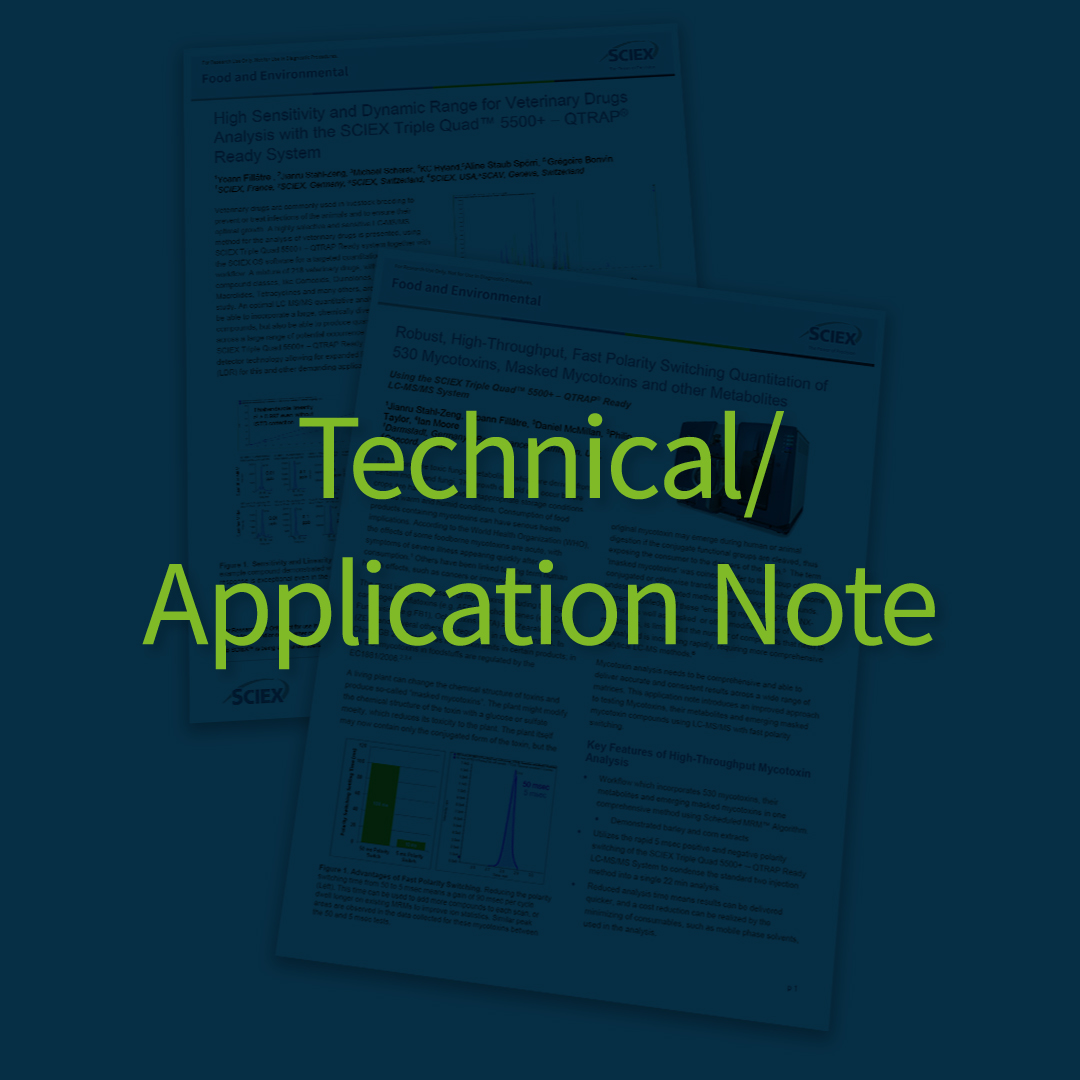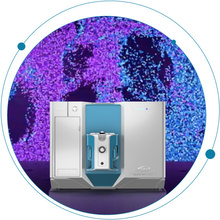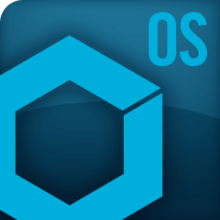I have a turbo v ion source that shows a glowing blue/purple light at the tip of the Heated Nebulizer corona discharge needle, even when it is not in use and turned out of ion path as it should be when using TIS probe. It only happens in negative mode. It is not arcing to the cutain plate, just a slight noticeable glow at the tip of the corona needle when observed through the front window. My FSE has rebuilt the HN probe and components and also installed a new TIS probe. Still glows when in negative mode. Note also having poor sensitivity in negative mode as well and jagged peak shapes during infusion. Any ideas? Are the symptoms related?
Tags

Guide decisions during cell line development with more information at the intact level
Monitoring product quality attributes (PQAs) throughout monoclonal antibody (mAb) development is vital to ensuring drug safety and efficacy. By adopting orthogonal analytical techniques and integrating new technologies that have the potential to provide more information, it is possible to improve product quality and manufacturing efficiency and make more informed decisions.
Loss the contact closure signal
our 7600 couple with nanoLC Ultimate 3000 via contact closure. it has run without any loss connection during the batch. Just yesterday, the last injection keep equilibrating system until the LC finished the gradient run. We closed the software and power off LC and MS then started again but it did not help. The Dionex engineer also checked their LC and triggerring cable found both are ok.
Optimized rolling collision energy curves for IDA and SWATH DIA for peptides
During data dependent acquisition (DDA or IDA) or SWATH acquisition, the collision energy can be automatically adjusted according to the mass/charge and charge of the peptide. This dependency has been well characterized on our QTOF systems. By selecting rolling...

What has the Echo® MS system done for the pharma industry? (And don’t just take our word for it!)
SCIEX was very proud to have an illustration of the Acoustic Ejection Mass Spectrometry (AEMS) technology that powers the Echo® MS system on the front cover of the Journal of the American Society for Mass Spectrometry in January 2023. The associated article—Ultrahigh-Throughput Intact Protein Analysis with Acoustic Ejection Mass Spectrometry—was co-authored by scientists from SCIEX and Merck.
Methods for OPI electrode cleaning for Echo® MS system electrodes
Depending on the samples you are running on the system, it is possible for the Open Port Interface (OPI) electrode to become dirty or occluded over time. Below are two different cleaning strategies that can help you maintain your Echo® MS system and keep your OPI...

New features in OneOmics suite
I just wanted to thank the readers here, both the OneOmics suite users who’ve shared their time and watched OneOmics grow, and for all the talented developers and scientists who’ve made OneOmics suite what it is today.
Current proteomics software compatibility for ZenoTOF 7600 system
Below is a summary of various other software packages that are useful for processing proteomics data from the ZenoTOF 7600 system. Note this list is not comprehensive and only covers the tools we have lightly tested to date. Acquisition Type Software Files needed...
Easy switching of sources and LC flow regimes on the ZenoTOF 7600 system
This series of videos outlines how a user can easily switch sources and operate the system in different LC flow regimes.
Automation integration for the Echo® MS system
The Echo® MS system is specifically designed to be compatible with a variety of automation options to allow labs the flexibility to personalize their setup to meet their specific needs. To help you make the best decisions for your own lab, here are the answers to some...
Processing ZenoTOF 7600 system data with DIA-NN software
DIA-NN software is a powerful software tool for processing data independent acquisition (DIA) proteomics datasets. It uses neural networks and other algorithms to identify and quantify peptides and proteins from DIA data and is specifically optimized for fast...

Advanced analytics for mAb variants
Access mab-variants-infokit>
High level method optimization considerations for Echo MS system
While an in-depth discussion of method development and optimization for the Echo® MS system is beyond the scope of a community post, here are some points to consider as part of the process: The maximum recommended ion spray voltage for prolonged electrode life is 5000...
Tips to maximize electrode lifetime for Echo MS system
While it’s easy to think of the Echo® MS system as an ultrafast LC system in front of the SCIEX Triple Quad 6500+ mass spectrometer, the system operates on fundamentally different principles. For this reason, it requires different routine maintenance to keep it...
Uploading and using transcriptomics data in the OneOmics suite
RNA experiments can be created in the OneOmics suite for multi-omics analyses, enabling integration of transcriptomics data and proteomics data for biological insight. To build RNA experiments, either CloudConnect for PeakView software 2.2 or BaseSpace (Illumina) can...
High complexity of the lipidome
The complexity of the lipidome is diverse in the structure and there are many combinatorial isoforms that are available within nature. Currently, many different techniques are required to fully characterize a lipid molecule. What if you could do it in a single...
What is the difference between MRM3 vs MS/MS/MS (MS3)?
The MRM3 workflow and the MS3 scan are functionally the same QTRAP system scan, but used with different goals in mind. The main difference is how these scans are used in the whole MS workflow. With MS3 scans, you can use these in a data dependent mode for discovery...
Standard addition workflow – for quantification and calculating background levels
The method of standard addition is a quantitative analysis approach used in situations where matrix effects from complex samples contributes to the analytical signal. This makes it impossible to compare the analytical signal between sample and standard using a...
How do I define the experimental design (the metadata) for my SWATH acquisition study within the OneOmics suite? What are the requirement for replicates?
In quantitative Omics research, the goal is to understand which analytes (protein or metabolite) are perturbed between experimental conditions; therefore we carefully design our studies to explore these questions. The algorithms used within the Assembler application...
Controlling the M5 MicroLC system with SCIEX OS software using contact closure
Contact closure can be used to control external devices that are not directly controlled by SCIEX OS software. A sample batch is first created in the SCIEX OS software for MS acquisition, and then a similar batch is created on an external LC device with the required...

What are my normalization options in MarkerView software and when should I use them?
In an LC-MS experiment there are multiple sources of variance that can confound the quality of your results. This variation can be biological e.g. differences between treated and control groups, but can also be non-biological, usually from small variations in...
Intabio acquisition expands SCIEX portfolio of impactful solutions to accelerate biotherapeutic development
Due to the nature of their production, biotherapeutics are difficult to manufacture. Growth conditions, purification protocols and formulation requirements can introduce unintended modifications into the protein structure that may affect its efficacy and safety.

Top questions about the exposome of PFAS revealed
According to the CDC, the exposome is “the measure of all the exposures of an individual in a lifetime and how those exposures relate to health.”

What’s in your citrus oil?
Craig Butt explains a non-targeted omics approach to characterizing and profiling compounds in citrus oil Read time: 4 minutes There is increasing interest among consumers in the benefits of natural products containing citrus beyond the traditionally known benefits of...

Breaking down the SCIEX Triple Quad™ 7500 LC-MS/MS System – QTRAP® Ready
Sensitivity and robustness carry different meanings in the world of mass spectrometry. Generally, sensitivity refers to an instrument’s ability to achieve lower limits of detection (LOD). Robustness, on the other hand, refers to an instrument’s ability to consistently...

Importing acquisition methods from Analyst software to SCIEX OS software
The SCIEX Triple Quad 7500 system is the first nominal mass instrument to be released completely on SCIEX OS software. Moving to a new software solution can be time consuming with the need to transfer numerous methods to the new platform. SCIEX OS software helps...
The honey sting
As a consumer it’s hard for me not to feel inundated with claims that our food is “all-natural” or “chemical-free” or that we should buy certain “superfoods” for their health benefits. We read labels and trust that the product we are buying is what we are truly...

The top 5 questions to ask when investing in accurate mass technology for forensic toxicology workflows
Are you considering the purchase of a high-resolution accurate mass (HRAM) instrument for your forensic toxicology lab? To help ensure you invest in a solution that ideally meets your needs, ask yourself the following key questions. 1. How do I ensure my results...

Innovation that’s blasting through limitations in explosive detection
Mass spectrometry’s important role in identifying explosives The need for rapid explosive detection is now an unfortunate reality. The remit is multifaceted. The first is for preventative purposes, to protect us from any threat to life. The second is in the...

A new generation of therapeutic modalities
There are over 7,000 genetic diseases that could potentially be cured using gene therapy. Rare metabolic diseases, autoimmune disorders, cardiovascular disease and cancers are some of the top disease classes that can be addressed with gene therapies. With over 1,000...
Enhancing Biologics with CESI-MS Characterization
Comprehensive characterization of a biologic requires analysis at both the intact and digest levels, but these analyses can be complex and cumbersome. For example, with conventional liquid chromatography separations, researchers are often left with limited information...



 Contact Support
Contact Support